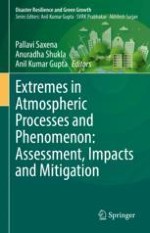2022 | OriginalPaper | Chapter
17. Policy Implications and Mitigation Strategies for Air Pollution and Atmospheric Extreme Events
Author : Disha Sharma
Published in: Extremes in Atmospheric Processes and Phenomenon: Assessment, Impacts and Mitigation
Publisher: Springer Nature Singapore
Activate our intelligent search to find suitable subject content or patents.
Select sections of text to find matching patents with Artificial Intelligence. powered by
Select sections of text to find additional relevant content using AI-assisted search. powered by
